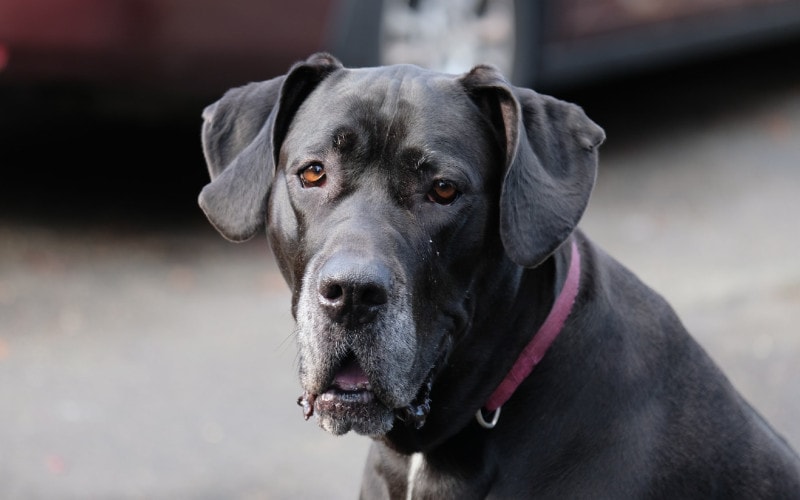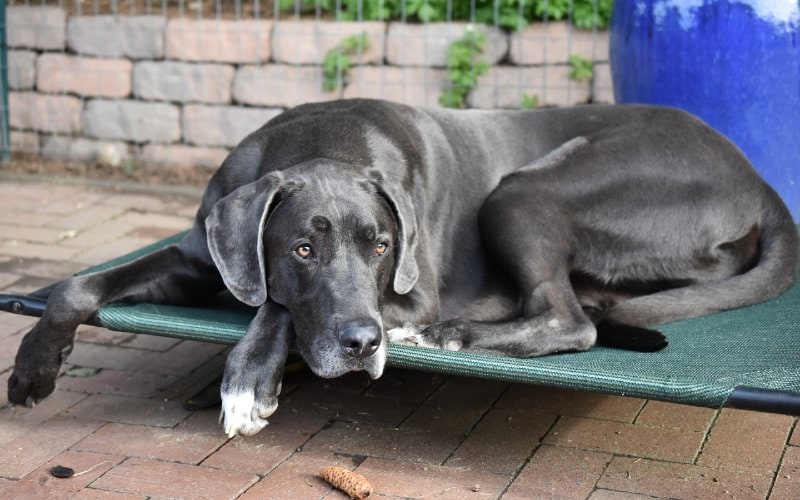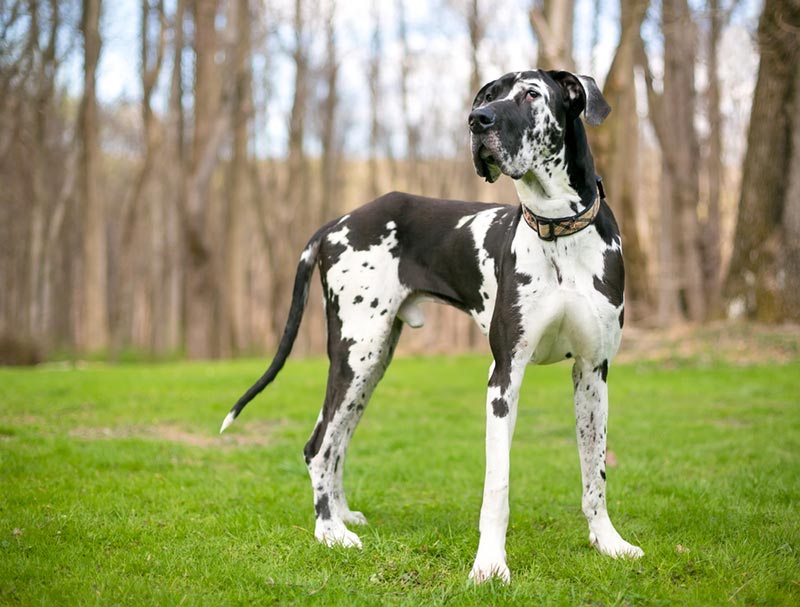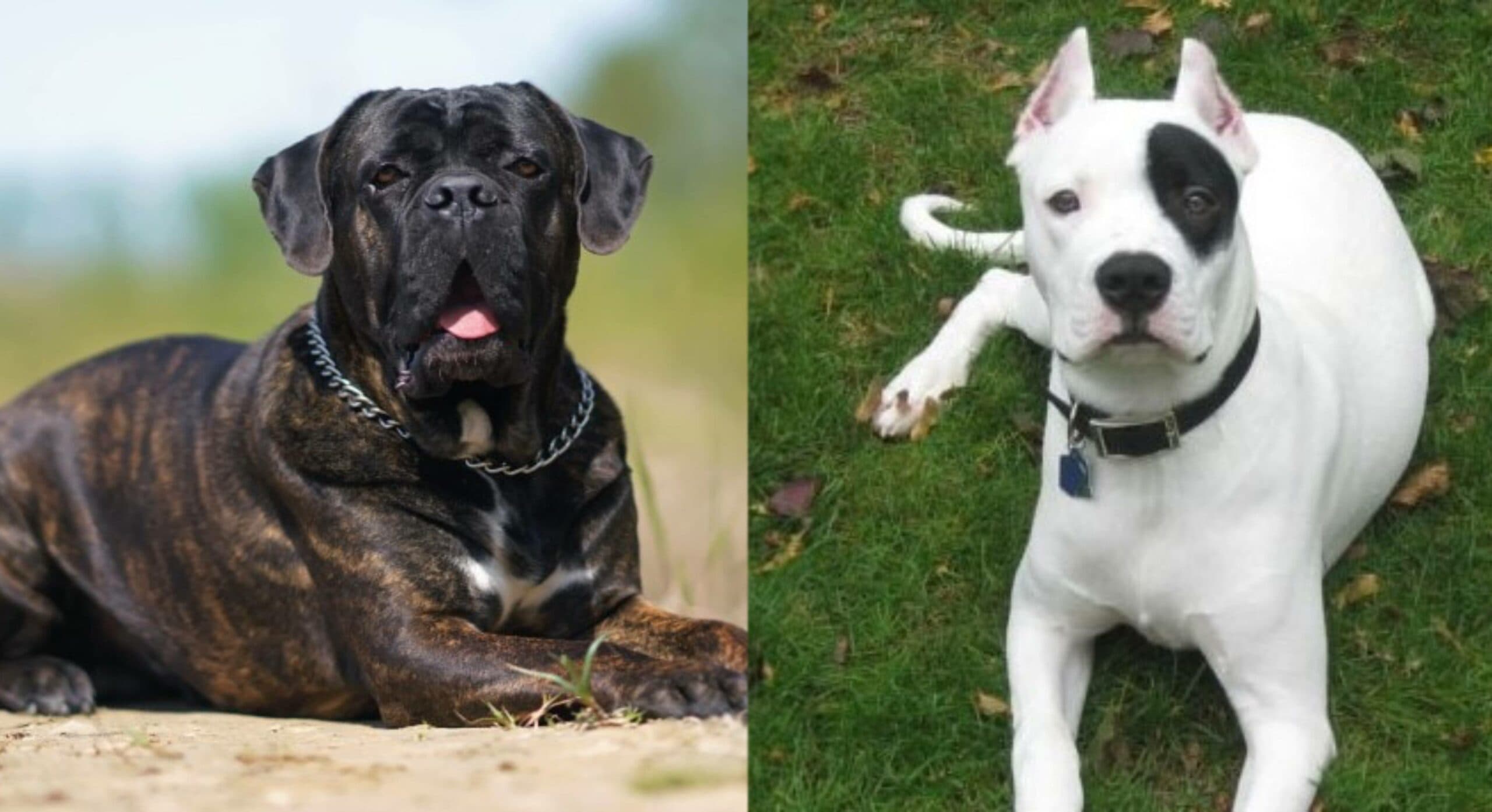7 Common Great Dane Health Issues: Vet-Reviewed Facts

Updated on

Built like small horses, Great Danes are gentle giants that have captured the heart of many pet owners. But in exchange for that size and larger-than-life personality, the giant Great Dane has its fair share of health conditions.
Like most large or giant breeds, Great Danes have a shorter-than-average lifespan (8–10 years) and health problems that can impact them significantly. Here are seven health conditions common in Great Danes.
The 7 Most Common Great Dane Health Issues:
1. Bloat
Great Danes are highly susceptible to bloat, like other large breeds with broad chests. This dangerous and often fatal condition, also known as gastric dilatation and volvulus or GDV, causes gas to build up in the stomach, stretching it and causing pain. Eventually, the stomach can twist, preventing anything from exiting. The stomach may twist, cutting off circulation and causing tissue death.
Bloat is often a critical condition that requires expensive surgery to treat, and once dogs get it once, they are more likely to get it a second time. Be sure to speak to your vet about options to minimize the risk of bloat in your Dane.
- Distended and hard stomach
- A lack of digestive sounds
- Dry heaving
- Vomiting foam or mucus
- Standing in a hunched-over position
- Pacing
- Whining
- Licking the air
- Shallow breathing
- Weak pulse
- Collapse
- Pale gums

2. Hip Dysplasia
Hip dysplasia can occur in most breeds, but it’s more common in large and giant breeds. With this condition, the head of the femur doesn’t fit correctly in the socket, causing pain and mobility issues. This can be caused by genetics, abnormal development, poor nutrition, and more.
- Pain or discomfort during exercise
- Lameness
- Stiff back legs
- A hopping type of run
- Stiffness
- Difficulty getting up
- Muscle tone loss
3. Dilated Cardiomyopathy
Canine dilated cardiomyopathy is a condition in which the heart is enlarged and can’t generate the necessary pressure to pump blood through the body efficiently. It may be caused by nutrition, infection, and genetic factors. In most cases, cardiomyopathy is undiagnosed until the dog becomes seriously ill or dies.
- Lethargy
- Weight loss
- Coughing
- Weakness
- Increased heart rate
- Difficulty breathing
- Exercise intolerance
- Depression
- Low appetite

4. Tricuspid Valve Disease
Great Danes are prone to a congenital heart defect, tricuspid valve disease, that prevents the valve between the right ventricle and atrium from functioning properly. The poor function of the valve alters the way the heart pumps blood, straining the right side of the heart and possibly leading to heart failure. The condition can be managed with the help of a vet.
- Heart murmur
- Difficulty breathing
- Increased heart rate
- Weakness
- Exercise intolerance
5. Osteosarcoma
Osteosarcoma, a type of bone cancer, is common in large and giant dog breeds like Great Danes. These tumors are highly aggressive and typically destroy the bone where they grow—often in the limbs—and spread quickly. Early treatment, often including amputation of the affected limb, is critical for this cancer.
- Noticeable lumps
- Swelling
- Lameness
- Obvious joint or bone pain
- Lethargy
- Anorexia

6. Thyroid Problems
Great Danes are prone to thyroid conditions like autoimmune thyroiditis and hypothyroidism. Fortunately, these diseases can be monitored and managed with medication successfully, but it’s important to check the dog’s thyroid levels with regular blood work.
- Dull or dry skin or coat
- Dark pigmentation of the skin
- Weight gain or loss with no appetite changes
- Lethargy
- Cold weather intolerance
7. Addison’s Disease
Also known as hypoadrenocorticism, Addison’s disease is a common endocrine disorder that can affect Great Danes. It typically forms from the decrease in corticosteroid secretion from the adrenal gland. If there’s too much of the hormone, it’s Cushing’s disease. Addison’s disease can usually be treated with corticosteroids.
- Lethargy
- Anorexia
- Vomiting
- Muscle weakness
Are Great Danes Healthy Dogs?

Great Danes may be susceptible to health problems, but virtually every breed is. You can reduce the risk of health concerns in your Great Dane by choosing a reputable breeder who tests for genetic problems. If you’re rescuing a dog, you can have a vet evaluate your dog to come up with a wellness plan.
Along with regular veterinary care, a healthy diet that gives your Dane the nutrients it needs and helps it maintain an ideal weight plays a big role in overall health and well-being. Obesity is a big risk for giant dog breeds and can contribute to osteoarthritis, diabetes, and hip dysplasia.
Conclusion
Great Danes are gentle giants that make great family pets. Due to their incredible size, Great Danes have some serious health conditions that are prevalent in the breed, including bloat and hip dysplasia. The best thing you can do for your dog’s health is to keep up with regular veterinary care and discuss any concerns or preventative measures with your vet.
Read also:
Featured Image Credit: Fotyma, Shutterstock














